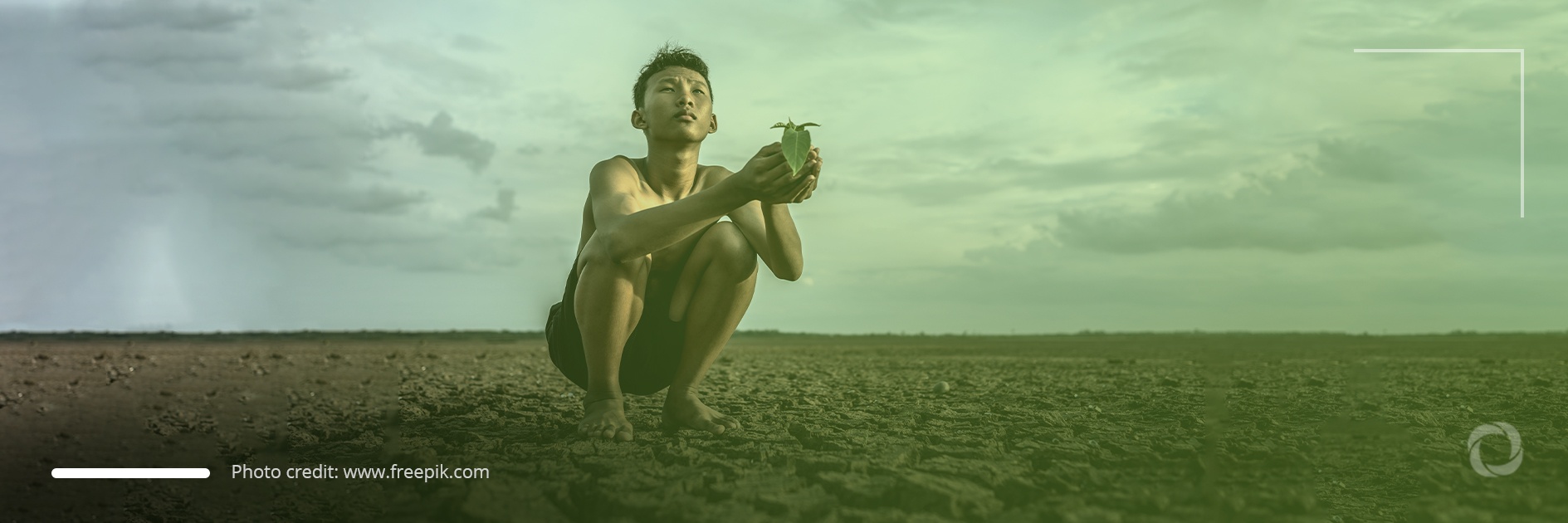Recently-born children will face extreme weather events on a much larger scale than people born in 1960 due to climate change even if humanity meets the reduction in greenhouse gas emissions provided for in the Paris Agreement. The children from low- and middle-income countries will be the most affected and are, in fact, already struggling with the side effects of global warming.
According to the latest research conducted by the international aid organization, Save the Children, and climate researchers from Vrije University in Brussels (VUB), newborns may witness significantly more frequent wildfires, crop failures, droughts, river floods, and heatwaves than those who were born 60 years ago. The graph below shows that the largest increase concerns the intensity of heatwaves.
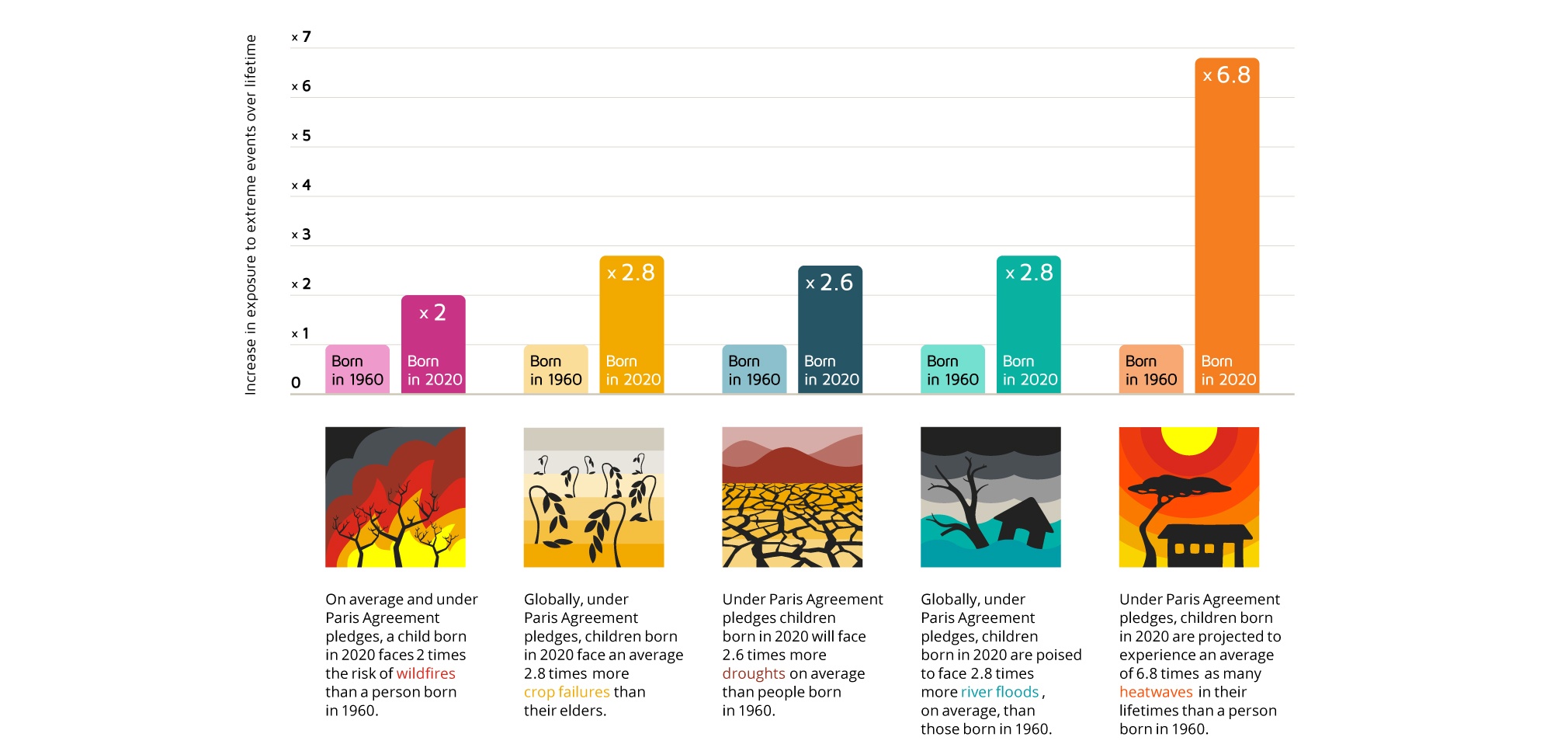
Although the report focuses on the impact on children born in 2020, many of those who are older are also suffering due to climate change.
Sixteen-year-old Chatten from the Philippines was only eight years old when Typhoon Haiyan destroyed his home.
“I’ve seen the effects of climate change with my own eyes. Typhoon Haiyan destroyed thousands of homes where I live and left many of my friends, relatives, classmates, and other people homeless. Even before that, we were already experiencing a lot of climate-related disasters in my region, and each year it gets worse. In recent years we’ve had a drought, extreme heat waves, and landslides caused by heavy rains. The months that are supposed to be sunny have become rainy, and the months that are supposed to be rainy are sunny,” he told Save the Children.
Wildfires
Wildfires are increasing in frequency and intensity. This was particularly noticeable last year when they struck Southern Europe, Canada, and the U.S., destroying large swathes of land. The report warns that Palestine, Afghanistan, and Papua New Guinea are at particular risk of wildfires as their frequency has doubled there compared to previous generations. Their frequency has also increased in Turkey and Jordan, two countries that host a large number of refugees including vulnerable children. As many as 44% of all Syrian refugees in Turkey are children while in Jordan that figure stands at 48% where they live in densely populated camps that are vulnerable to fires.
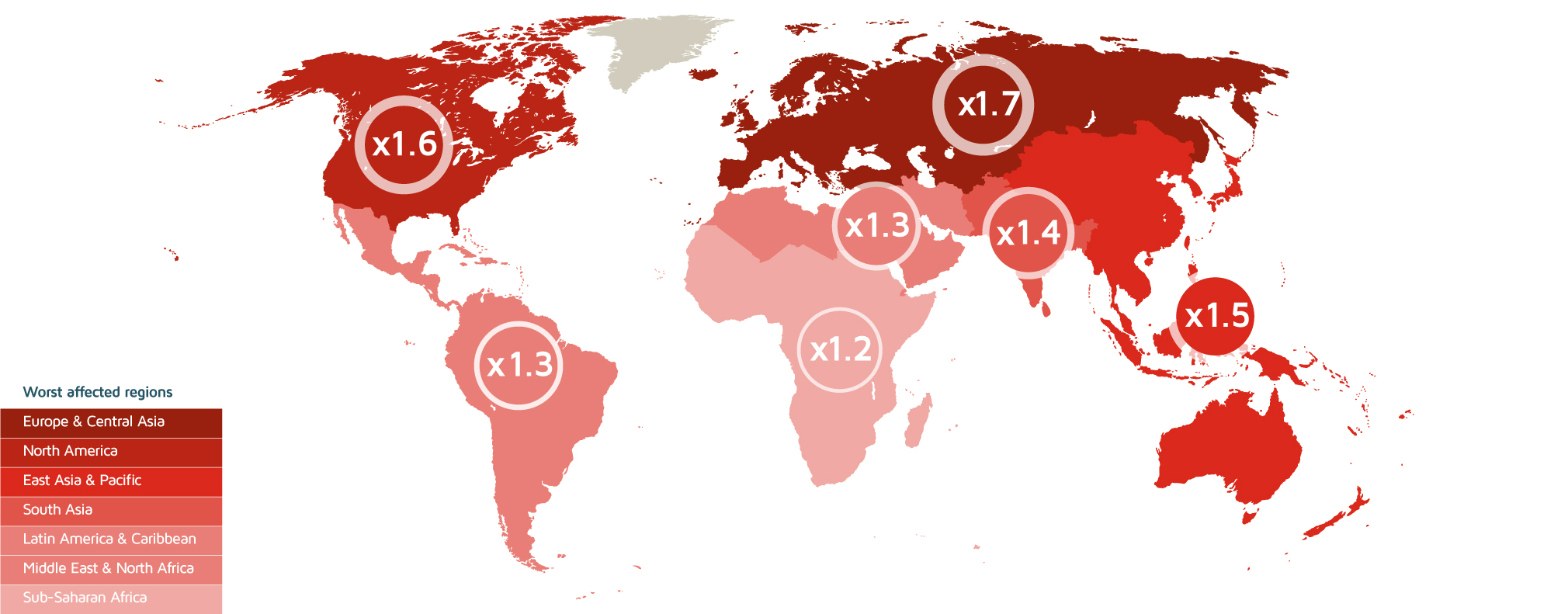
Crop failure
Climate changes have already caused food shortages leading to food insecurity for at least 33 million people in East and Southern Africa including 16 million children. However, the worst is still yet to come. The report’s authors estimate that children born in 2020 in sub-Saharan Africa will experience crop failure 2.6 times more than those born in 1960, while in South Asia this rate will be 3.6 times higher and in the Middle East and North Africa perhaps even 4.4 times higher and for Mali, 9.9 times higher.
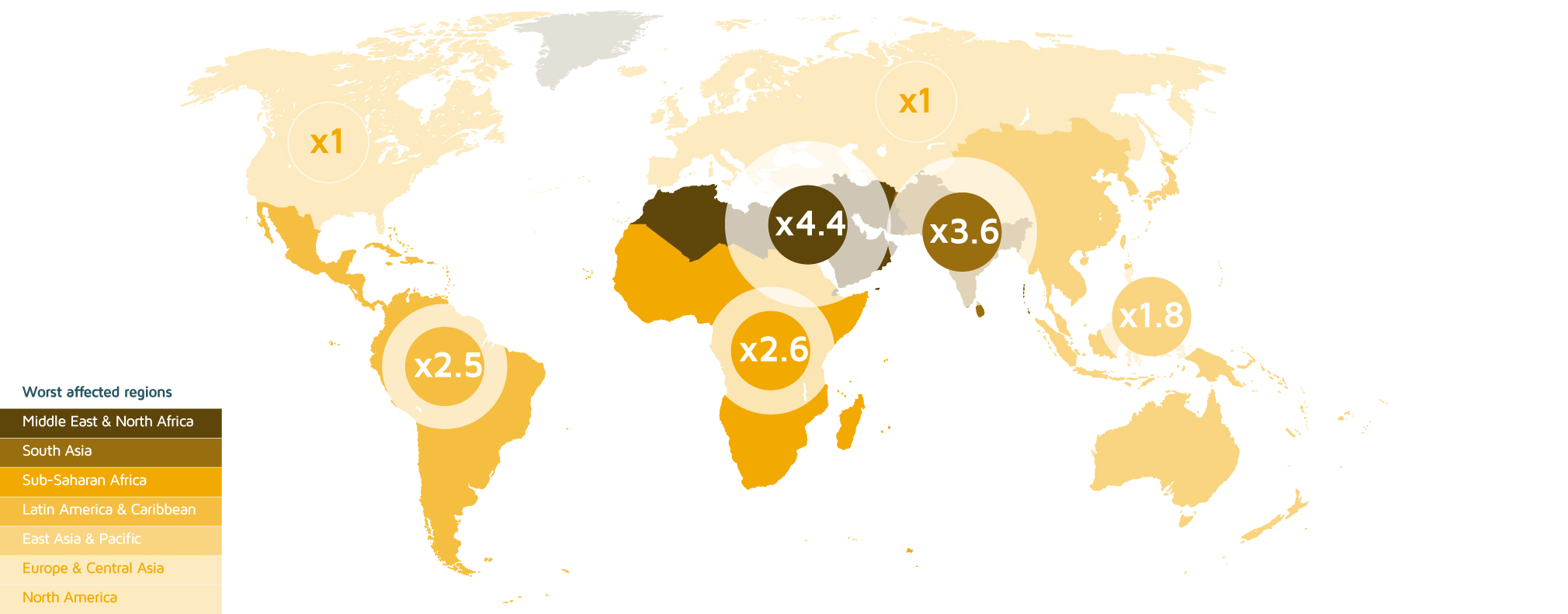
Droughts
Droughts will particularly affect low- and middle-income countries as the majority of these are located in the Global South which is impacted by climate changes much more than the North. Children born in 2020 in Afghanistan will experience 5.3 times more droughts than their grandparents who were born in 1960. In Tanzania, this rate will be 2.8 times more and in Kenya 4.6 times more. One of the worst affected countries is Iraq where 90% of land is dryland and therefore newborns will see 3.1 times more droughts and 4 times more crop failures.
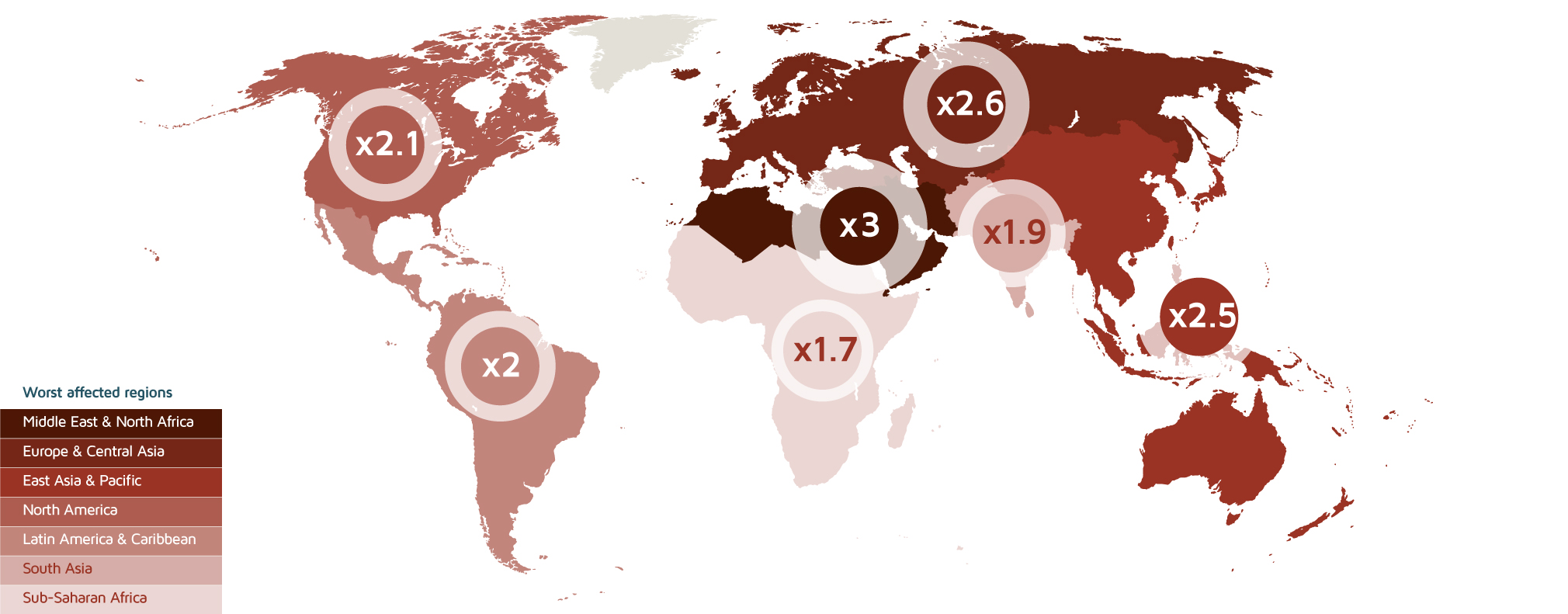
River floods
Again, floods are especially devastating for low- and middle-income countries as they often totally destroy poor infrastructure, and rebuilding takes much longer than in wealthy countries due to the lack of resources. Floods affect many spheres of human activity including education. In 2017 alone, 18,000 schools in South Asia were closed as a result of the disastrous floods that hit the region. It is estimated that children from North Africa who were born in 2020 will be 4.5 times more affected by floods compared to their grandparents born in 1960. The rate for sub-Saharan African countries is 3.8 times more, 3 times more for East Asia and the Pacific while only 1.3 more for North America.
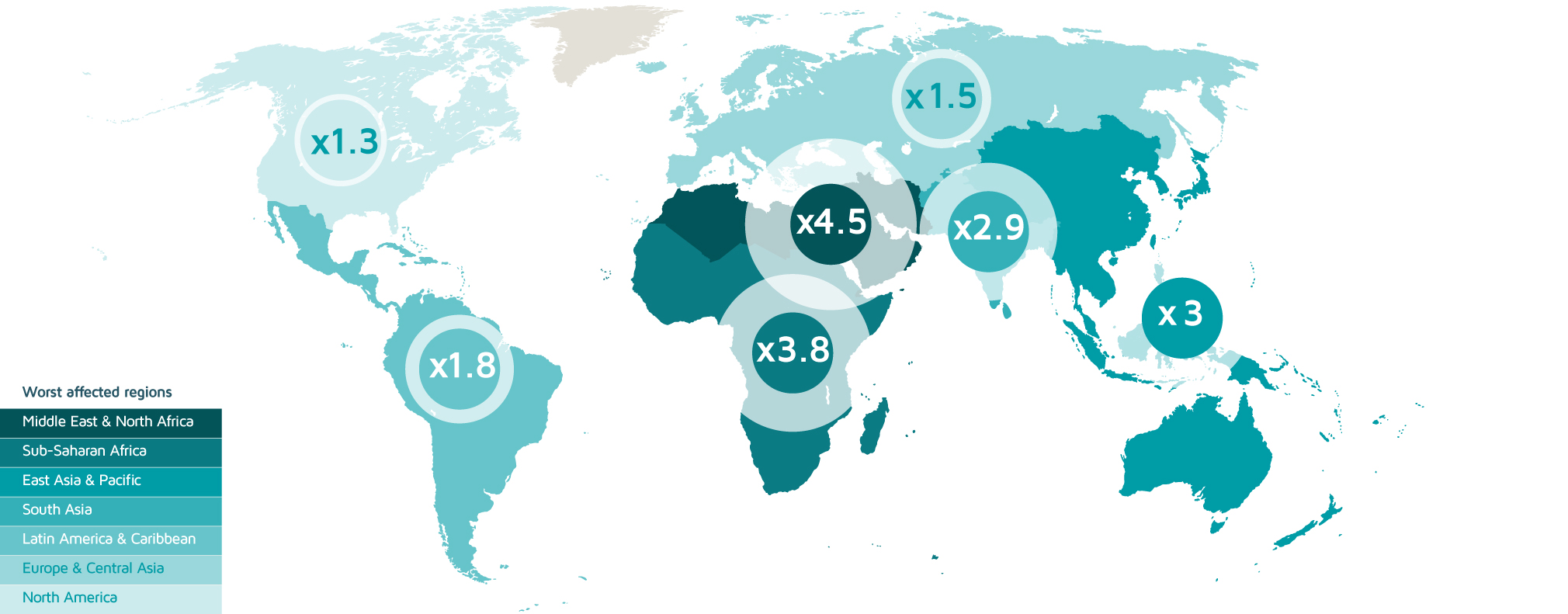
Heatwaves
This side effect of climate change will be the most intense for future generations as the intensity will increase 6.8 times globally for those born in 2020. Children in Europe and Central Asia will see 4.8 times more heatwaves whereas in parts of Africa, such as Congo DRC, the increase will reach 9 times more and for Eritrea, it may even be 11.6 times more while in Afghanistan, the intensity will be 18 times more. The worst affected region will be East Asia and the Pacific and the least North America as shown in the graph below.
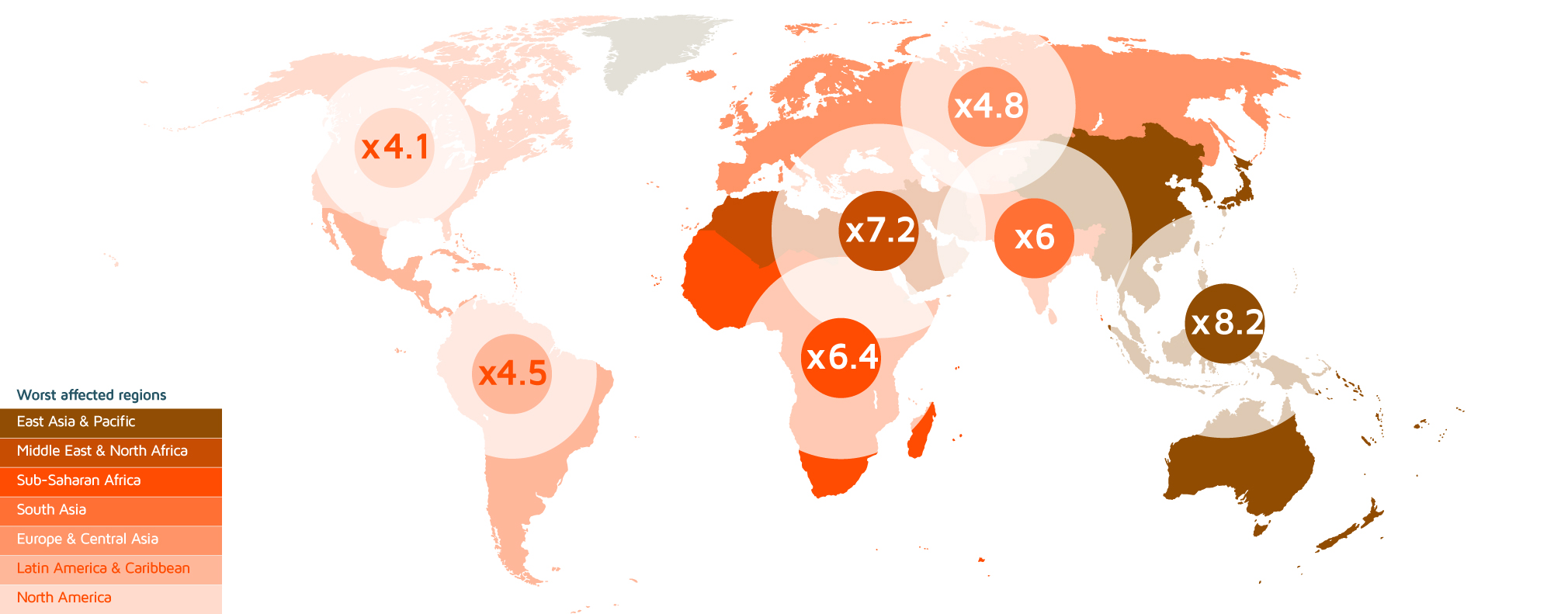
Recommendations
The report’s authors emphasize that in order to protect children against climate change and extreme weather events, humanity must act by:
- Taking ambitious and urgent action to restrict the rise in temperature to a maximum of 1.5 degrees
- Increasing financing for climate adaptation and mitigation
- Recognizing children as stakeholders and key actors of climate transition
- Strengthening social protection systems to prepare these to address the needs of children and families affected by climate shocks
